Filterscape VA has a standard analog synth configuration, which is unusual for u-he company. This article is mainly going to focus on common parts of analog synthesizers, so this content can be applied to other synthesizers as well. In this article, I will talk about LFOs, which are indispensable for synthesizers.
What is LFO?
Filterscape VA has three LFOs, LFO1, LFO2, and LFOG (global), as shown above. LFO stands for Low Frequency Oscillator. LFOs generally handle frequencies between 0.2Hz and 30Hz, which are inaudible to the human ear. They are more like vibrations or oscillations than sounds. In Filterscape VA, the period can be set in time or in notes. LFOG (Global) is an LFO that is not retriggered for each voice.
LFOs are used for modulation
Although LFOs create an inaudibly low pitch, various effects can be created by modulating each module with an LFO. Modulation has the image of shaking a certain parameter with a cycle of LFOs. A single LFO can modulate multiple locations. The following sample uses a sine wave LFO.
Modulating the pitch of the OSC with an LFO
When LFO is applied to the pitch, it becomes a vibrato. The figure below shows TUNE with about 5 LFO1 applied.
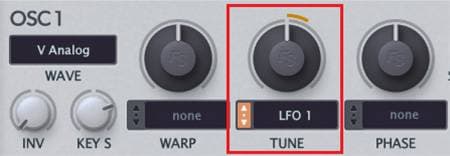
In the case of Filterscape, there is a dedicated VIBRATO, which is easier to use than the above. In VIBRATO, LFO1 is connected and cannot be changed. When VIBRATO is set to a maximum of 100 (plus or minus a 50-cent swing), 0.5 is equivalent to using TUNE with OSC.
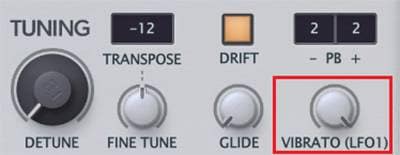
Modulating the pulse-whiz of the OSC with an LFO
Applying an LFO to the pulse-whiz changes the timbre. The setting shown below changes the duty ratio of the analog-like square wave. The LFO is a sine wave, set to a very slow frequency.

When executed, you can see that the duty ratio of the rectangle changes periodically, depending on the LFO, as shown in the figure below.
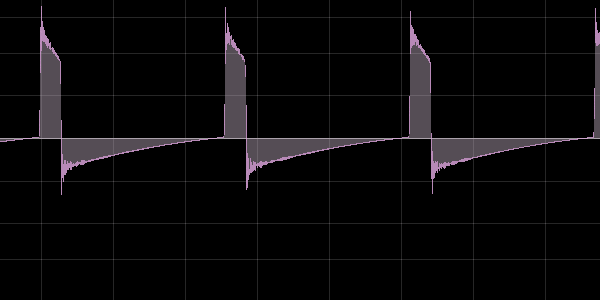
AMP VOLUME modulated by LFO
AMP controls the volume, so the volume cycle changes and becomes a tremolo effect.
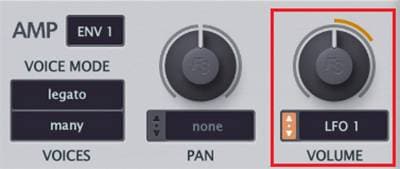
Modulating CUTOFF of FILTER with LFO
The cutoff frequency changes with the LFO period. This results in a wah effect.
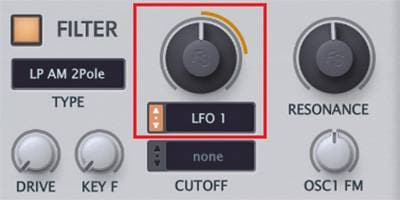
Modulating the PAN of AMP with LFO
The PAN of AMP is modulated by LFO and oscillates left and right.
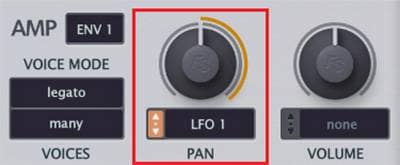
LFO Waveforms and Their Characteristics
The Filterscape VA LFO has a choice of waveforms as shown in the figure below. The sine and triangle waveforms are used for smooth changes. Saw up, down (sawtooth wave) is often used for sound effects. The sqr (square wave) can be used as a switch, like an on/off switch.
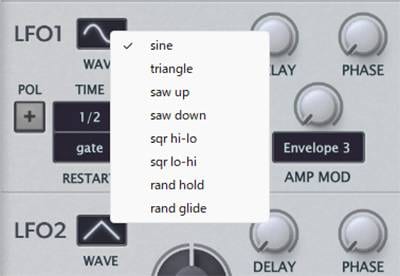
The following sample modulates pitch with saw up and sqr to simulate an artificial sound.
rand hold、rand glide
Instead of the periodic waveforms described above, random waveforms can be created. Since rand hold changes randomly at regular intervals, it is suitable for rain or artificial sounds. Below is the waveform when the volume is modulated. The original waveform is a constant volume waveform, but by modulating it with LFO, you can see that the volume has become random at regular intervals.
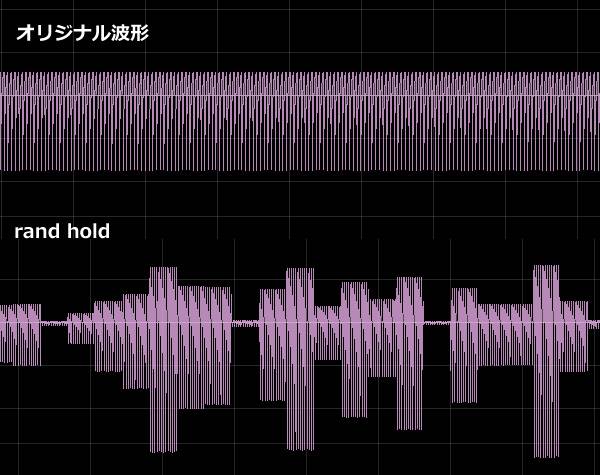
Below I modulated the pitch with LFO rand hold to make it sound like a computer in an old sci-fi movie.
The rand glide has a continuously changing difference and is suited for natural sounds such as wind and waves.
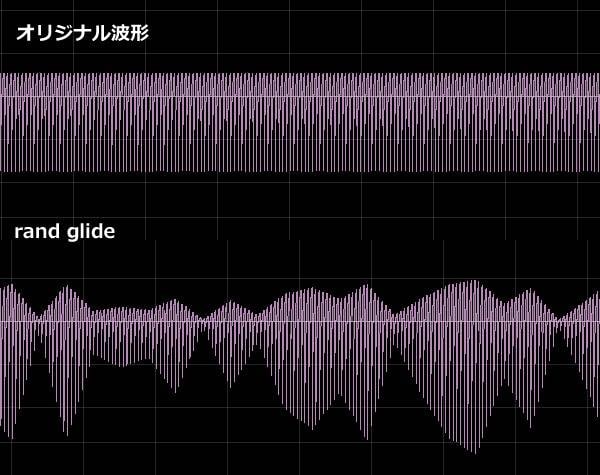
In the following sample, I tried to create an unsettling and eerie sound.
LFO Summary
These are the basic uses of LFO, and it is an essential function in creating analog synth-like sounds. Most analog synths are used within the above range, but some synths can treat the LFO like a normal oscillator, and some models can even do things like FM synthesis.
In the next issue, I would like to touch on filters, which can be considered the heart of a synth.
The “sound & person” column is made possible by your contributions.
For more information about submissions, click here.





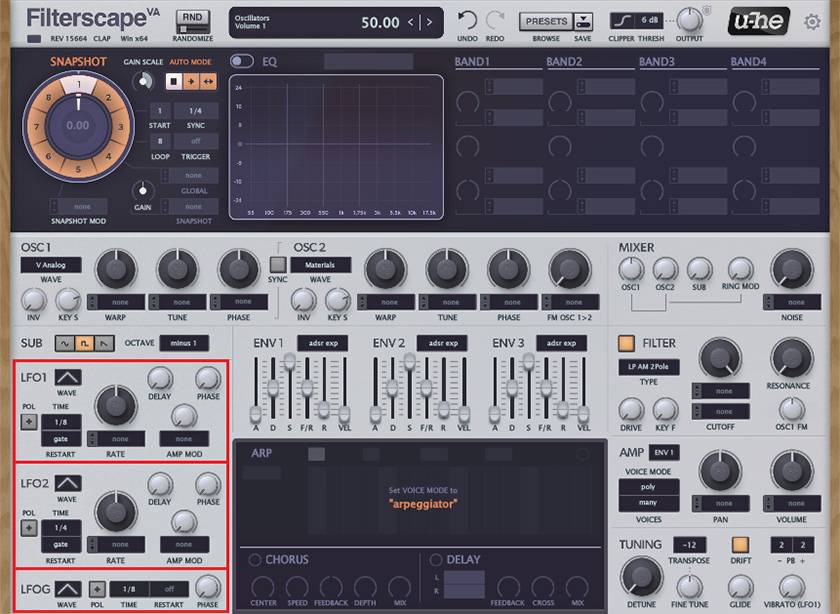

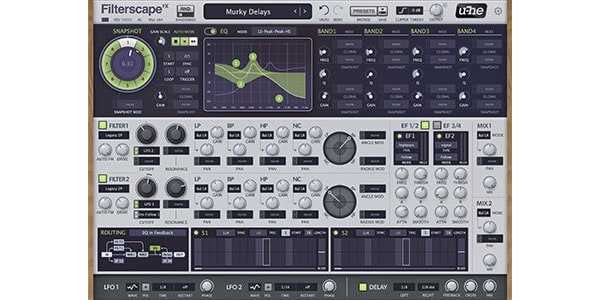





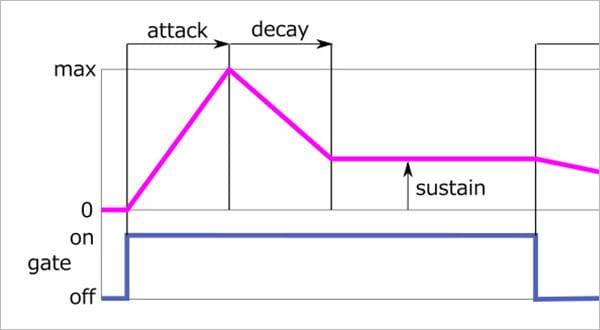
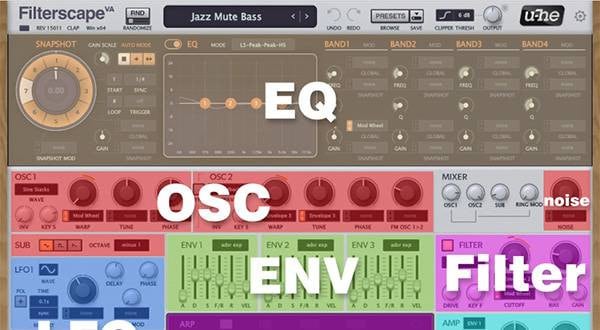
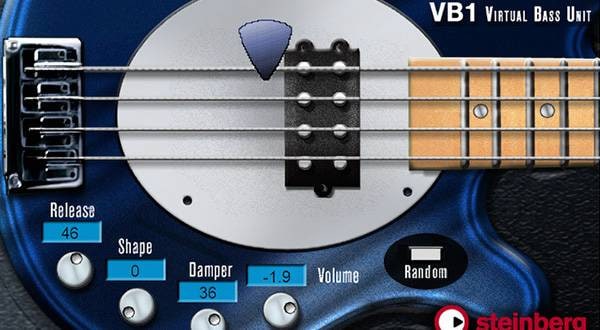
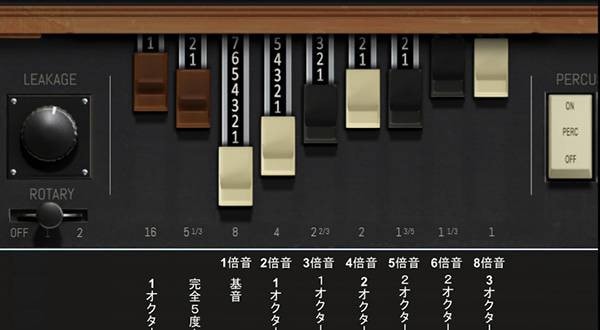
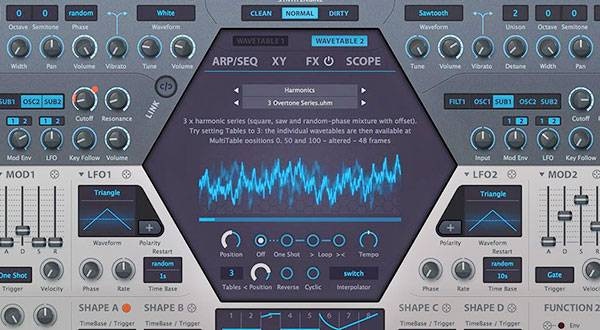
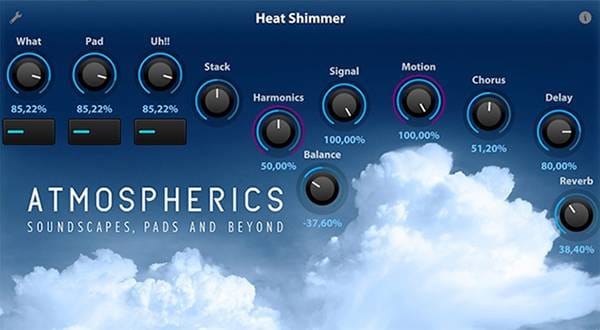
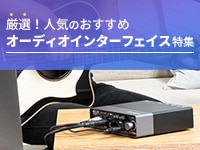 厳選!人気のおすすめオーディオインターフェイス特集
厳選!人気のおすすめオーディオインターフェイス特集
 USB接続対応のMIDIキーボード
USB接続対応のMIDIキーボード
 機能で選ぶ オーディオインターフェイス
機能で選ぶ オーディオインターフェイス
 DTMに必要な機材
DTMに必要な機材
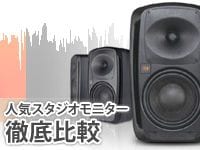 人気スタジオモニター徹底比較
人気スタジオモニター徹底比較
 DTM・DAW購入ガイド
DTM・DAW購入ガイド















